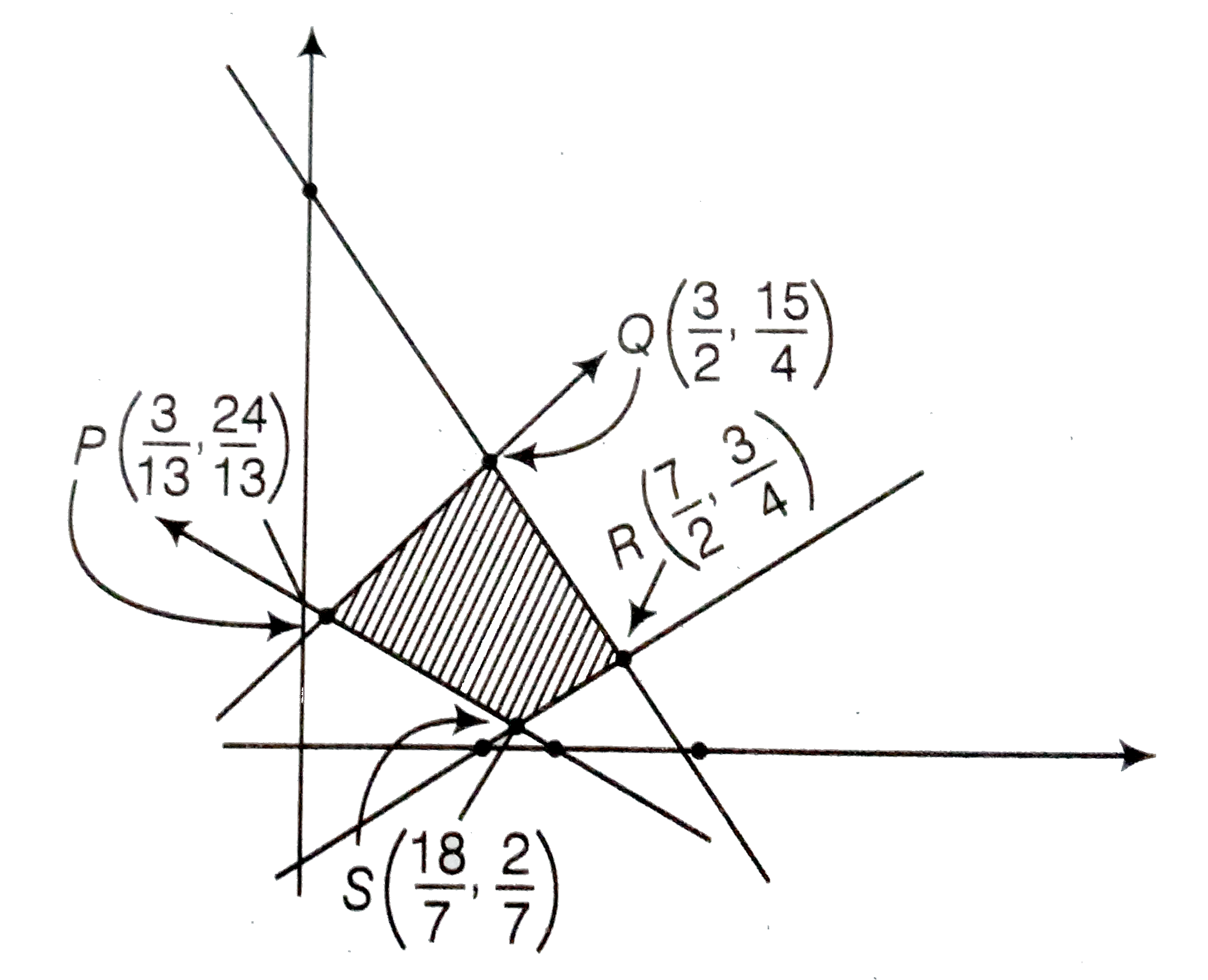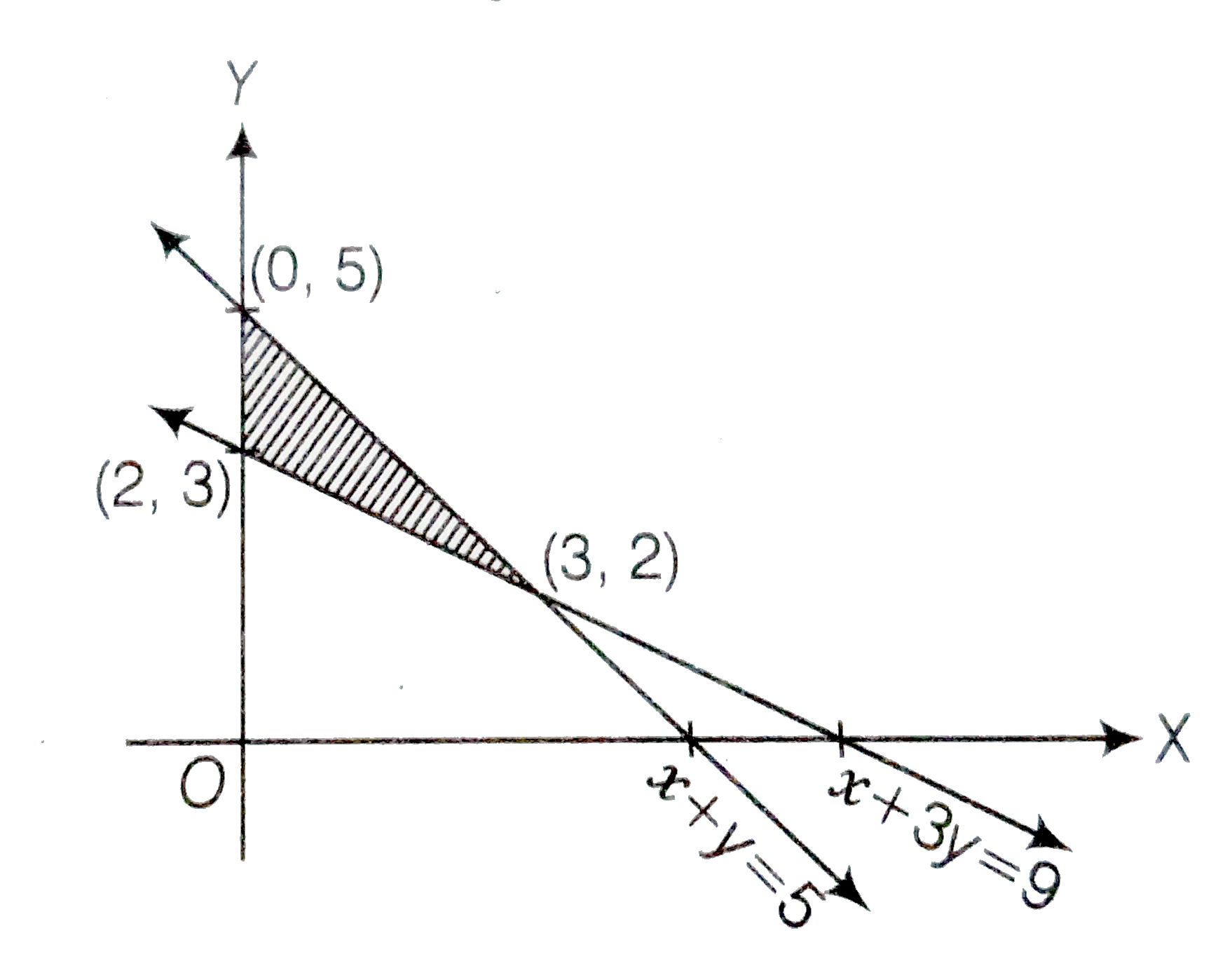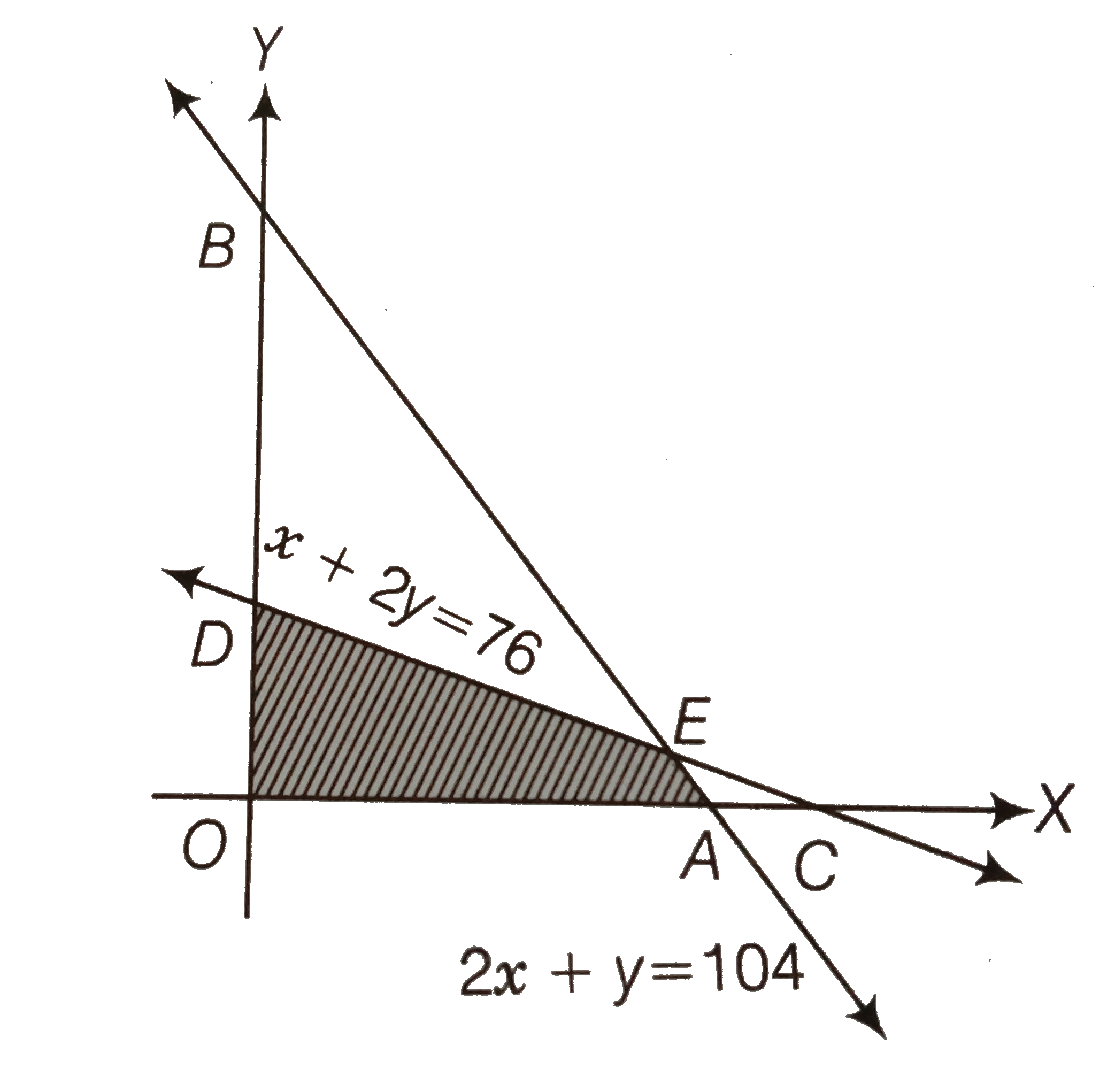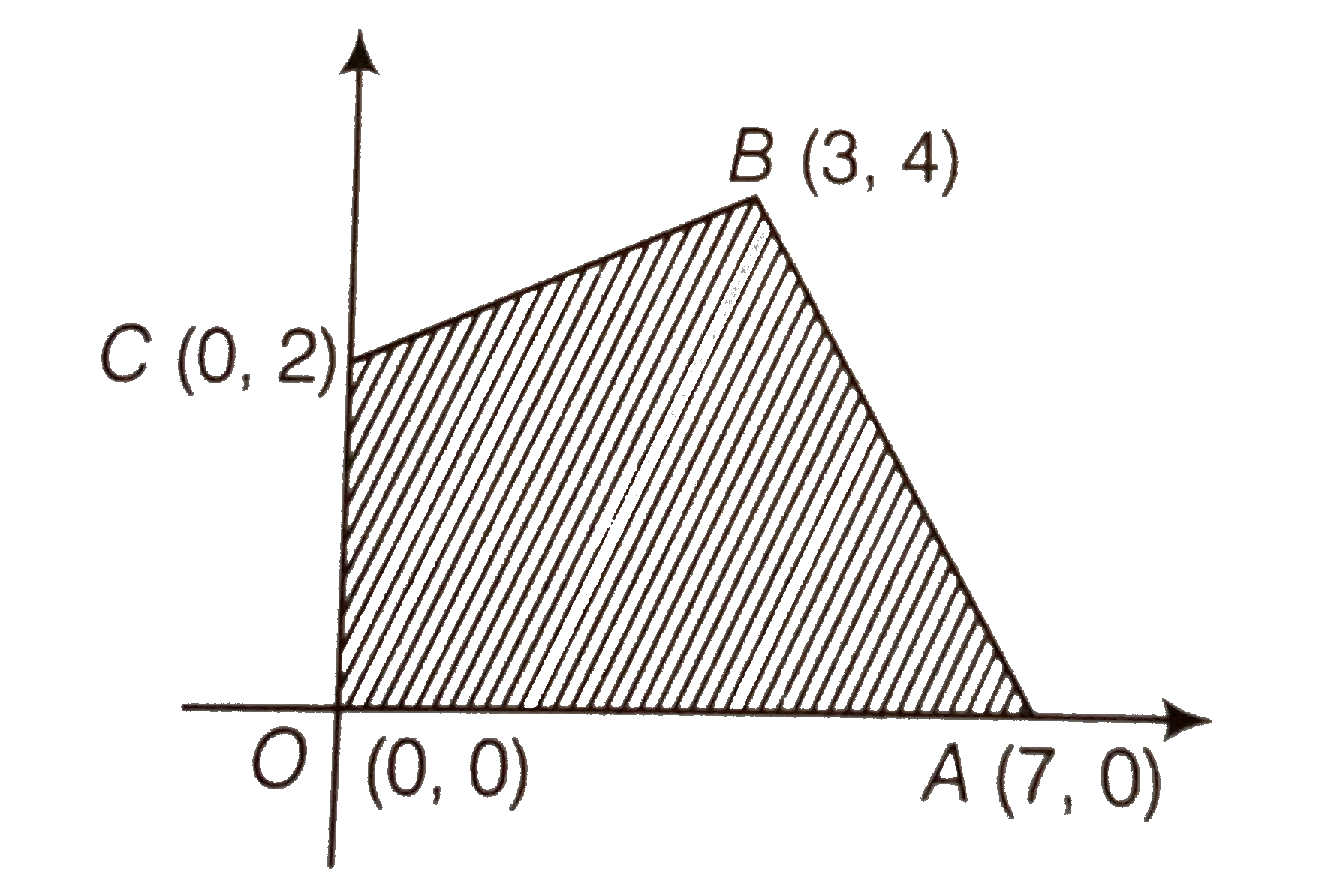In the following the feasible region (shaded) for a LPP is shown Determine the maximum and minimum value of Z=x+2y

A
maximum = 7 minimum = 479
B
maximum = 9 minimum = 317
C
maximum = 10 minimum = 345
D
maximum = 8 minimum = 547
Video Solution
Text Solution
The correct Answer is:B
From the shaded bounded region. It is clear the coordinates of corner points are
(313,2413),(187,27),(72,34)and(32,154)
Also we have to determine maximum and minimum value of Z=x+2y.

Hence, the maximum and minimum value of Z are 9 and 317, respectively
|
Updated on:21/07/2023
Topper's Solved these Questions
Similar Questions
Knowledge Check
- Question 1 - Select One
The feasible region for an LPP is shown in following figure. Find the minimum value of Z=11x+7y.
 A22B23C24D21
A22B23C24D21 - Question 2 - Select One
The corner point method for bounded feasible region comprises of the following steps
I. When the feasible region is bounded, M and m are the maximum and minimum values of Z.
II. Find the feasible region of the linear programming problem and determine its corner points.
Ill. Evaluate the objective function Z = ax + by at each corner point. Let M and m respectively be the largest and smallest values of these points.
The correct order of these above steps isAIII,I,IIBII,III,ICII,I,IIIDI,III,II - Question 3 - Select One
Consider the following statements
I. If the feasible region of an LPP is undbounded then maximum or minimum value of the obJective function Z = ax + by may or may not exist .
II. Maximum value of the objective function Z = ax + by in an LPP always occurs at only one corner point of the feasible region.
Ill. In an LPP, the minimum value of the objective function Z = ax + by is always 0, if origin is one of the corner point of the feasible region.
IV. In an LPP, the maximum value of the objective function Z = ax + by is always finite.
Which of the following statements are true?AI and IVBII and IIICI and IIIDII and IV
If ∣∣∣z+4z∣∣∣=2, find the maximum and minimum values of |z|.
View SolutionState True or False:
If the corner points of the feasible region are (0, 10),(2, 2) & (4, 0) then the minimum value of Z = 3x + 2y is at (4, 0)View SolutionDetermine the maximum value of Z=3x+4y, if the feasible reigon (shaded) for a LPP is shown in following figure
 View Solution
View SolutionState True or False:
If the corner points of the feasible region are (0, 7/3),(2,1),(3, 0) & (0,0) then the maximum value of Z = 4x + 5y is 12 .View SolutionLet R be the feasible region (convex polygon) for a linear programming problem and Z = ax + by be the objective function. Then, which of the following statements is false?
View Solution


